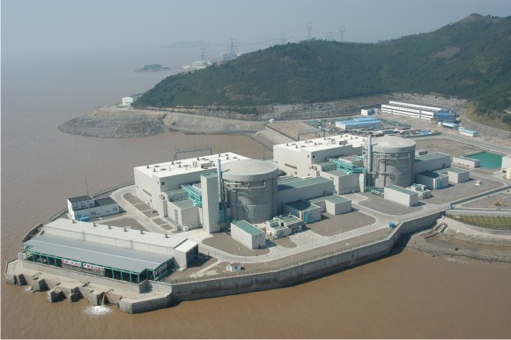2012
The end of the year marks a typical time to look back over the previous 12 months. Who are we at Weinberg to break with such annual tradition?
In that spirit, I present you not a January-through-December review of highlights. Rather, I revisit an August development that resurfaced here in London a few weeks ago, and that, as much as any nuclear event this year, reflects the spirit of alternative nuclear technologies.
We were not yet blogging on this website in the summer (there’s a 2012 highlight for you – Weinberg spruced up its pages with this blog in the early autumn), so we didn’t get a chance to headline it when Canada’s Candu Energy Inc. announced that it and China are well on their way to converting Candu’s conventional reactor design into one that runs on nothing but alternative fuels including thorium.
After speaking with Candu vice president of marketing and development Jerry Hopwood over lunch at the UK Nuclear Industry Association (NIA) conference earlier this month, I couldn’t resist dusting off the news, especially since the development promises to improve the operating efficiencies and waste problems of nuclear power as we know it.
“As Candu reactors are very fuel efficient and very adaptable, this is a way to get started on some of this expansion of the fuel cycle,” Hopwood told me as we discussed ways to improve nuclear operations via fuel types that are different from today’s standard enriched uranium.
PRAGMATIC POWER
Many advocates of thorium say that the optimal way to deploy it would be in entirely different reactor designs such as high temperature liquid molten salt reactors and pebble reactors that depart radically from conventional lower temperature water-cooled schemes.
Pragmatists say it would be best to start by burning it in existing reactor designs that already have regulatory approval. One such test is about to start in Norway.
Candu’s CANDU reactor counts among the conventional category, albeit it uses “heavy water” (water with a high concentration of hydrogen isotope called deuterium) as its coolant, as opposed to the far more common ordinary water, also known as “light water.”
China already operates two grid-connected CANDU reactors that burn natural uranium (CANDU is already something of a fuel alternative in that it does not require enriched uranium as do most of the world’s operating 430-plus commercial electricity generating reactors), at its Qinshan site about 90 miles southwest of Shanghai.
China’ China National Nuclear Corp. and Candu recently completed a successful two-year test of bundles of alternative fuel in those reactors, in which the bundles operated alongside conventional fuel in the same reactor. The alternatives included thorium as well as uranium “waste” recovered from light water reactors. It also included depleted uranium left over after uranium enrichment.
The success of those operations has helped pave the way for what Candu calls the Advanced Fuel CANDU Reactor (AFCR), which would burn nothing but recovered uranium, depleted uranium and thorium.
ENERGY SECURITY
The two uraniums would help China reuse a fuel – uranium – of which it does not have an abundant supply within its own borders (although it has been buying into foreign uranium operations).
The thorium, which transmutes into the uranium 233 isotope, would extend the life of the reactor’s fuel cycle, because the 233 would burn longer than natural uranium, Hopwood explained. “Thorium will help the fuel bundle keep going longer and produce more power,” he said.
As another advantage, China can access thorium through its own abundant natural supply.
“China has very large resources of thorium, very limited resources of uranium,” Hopwood noted. “So it’s a matter of their national supply security. They have a strong interest as a nation in bringing thorium into their fuel supply.”
Candu hopes to complete the AFCR design by 2014 and to build a small demonstration model by 2016, in partnership with China. Hopwood said he’s confident that AFCR would pass Chinese regulatory approval, as it’s an “incremental” change to on an already approved CANDU design.
The first version would be optimized for use with recovered and depleted uranium.
“Tests of full core thorium are still in the future,” Hopwood said.
Candu Energy is also talking to the UK’s Nuclear Decommissioning Authority about using CANDU reactors “for managing that country’s fissile material stocks,” Hopwood noted. That would entail “mixed oxide” fuels (MOX, or in the case of Candu, CANMOX) that would presumably include plutonium, which the UK stores at its National Nuclear Laboratory in Sellafield, England.
Back in China, the Qinshan AFCR project is just one several Chinese initiatives aimed at deploying alternative nuclear fuels.
As we’ve written here recently, China is also developing thorium fueled high temperature reactors that it would use to generate industrial process heat, as well as electricity. It envisions using the alternative reactors to help produce hydrogen and make methanol for use as an automotive fuel.





